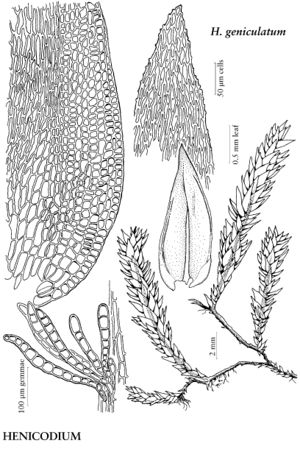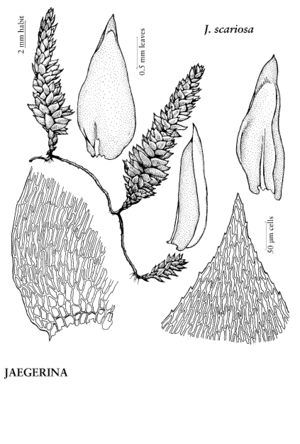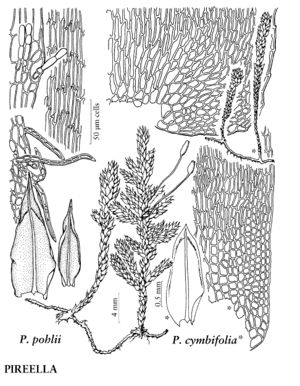Plants medium-sized to large. Stems often with basal stipe region, foliose, simple or pinnate, branches flagelliform; cortical cells orange-brown, walls thick, central strand not differentiated; paraphyllia absent; pseudoparaphyllia filamentous, 1-seriate, hyaline; stolons creeping, becoming erect, inclined, or horizontal, rhizoids usually restricted to stolons. Stolon leaves scalelike, 0.2–1.3 mm; apex short-acute or long-acuminate; usually ecostate. Stipe leaves appressed, erect, or recurved, triangular to ovate-acuminate; base clasping; costa double or single, shorter in distal stem leaves. Stem leaves appressed, erect, spreading, recurved, or squarrose, ovate-acuminate, ovate-orbicular, oblong-lanceolate, oblong-ovate, or ovate-lanceolate, concave; margins plane or rarely revolute to apex, entire, or serrulate distally; costa single or double and short; alar cells little differentiated, or rhombic to quadrate in several rows along margin, or rarely region well differentiated, large, conspicuous; proximal laminal cells at insertion dark yellow, walls porose, thick, irregular; medial cells sinuate or linear-flexuose, smooth, prorate, or rarely 1-papillose, walls often porose; distal cells shorter. Branch leaves similar to or differentiated from stem leaves, narrowly ovate-acuminate, concave, not or weakly plicate, sometimes smaller. Specialized asexual reproduction frequent, by clavate gemmae in clusters in leaf axils, reddish brown, 1-seriate, of 4–12 quadrate or rectangular cells, walls thick, verrucose. Sexual condition dioicous; perigonia on stem and branches, budlike, leaves few, scalelike, paraphyses 1-seriate, antheridia 5–10; perichaetia on stem and branches, urceolate, leaves 8–12, interior ones ovate-acuminate, abruptly narrowed to long, erect awns, paraphyses often present, multiseriate. Seta red-brown, elongate. Capsule erect, exserted, red-brown, narrowed to mouth, smooth; stomata absent; annulus usually absent; operculum short, rounded or conic, rostrate; prostome present; exostome reduced, teeth 16, often in 8 irregular pairs, incurved when dry, erect when moist, lanceolate, often irregular, inserted below mouth, mostly smooth; endostome of remnants adhering to back of exostome, cilia usually absent. Calyptra cucullate, fully or partly covering capsule, with scattered archegonia and paraphyses or smooth, not plicate. Spores spheric or ovoid, 20–35 µm, granulose, green.
Distribution
Nearly worldwide, tropical and subtropical regions.
Discussion
Genera ca. 16, species ca. 200 (3 genera, 4 species in the flora).
Pterobryaceae are highly diverse, and the family has frequently been the repository of odd, tropical taxa excluded from other families. Few features unite members of the family as currently circumscribed, and even these are not present in all taxa: tropical, primarily epiphytic habitats; a frondose habit, frequently with a differentiated stipe, although this may only be apparent in juvenile plants; 1-seriate, filamentous pseudoparaphyllia (B. H. Allen 1987); absent stomata; reduced peristomes, often with a prostome; and a highly reduced endostome. The inclusion of Henicodium in the family is questionable on morphological grounds, since the presence of papillae centrally located over the lumen and a revolute leaf margin are otherwise not known in Pterobryaceae. Molecular studies indicate some affinity between Henicodium and Orthostichopsis (W. R. Buck et al. 2000), although Pterobryon, the type genus, is usually placed distantly from both these exemplars. Henicodium is accepted here pending resolution of the family circumscription.
Selected References
Lower Taxa
Illustrations
Key
| 1 | Stem leaf margins revolute; alar cells oblate, well differentiated, regions large, conspicuous; medial laminal cells 1-papillose or rarely smooth. | Henicodium |
| 1 | Stem leaf margins plane; alar cells quadrate or rectangular, little differentiated, indistinct, or regions in several rows along margin; medial laminal cells smooth or prorate | > 2 |
| 2 | Stems simple or sparsely branched; stem leaves broadly ovate-orbicular, spreading to recurved or squarrose; costae double and short, or single to mid leaf or longer. | Jaegerina |
| 2 | Stems simple or irregularly pinnate; stem leaves broadly ovate-acuminate or ovate-lanceolate, erect or spreading; costae single, short in proximal leaves, percurrent or short-excurrent in distal leaves. | Pireella |


